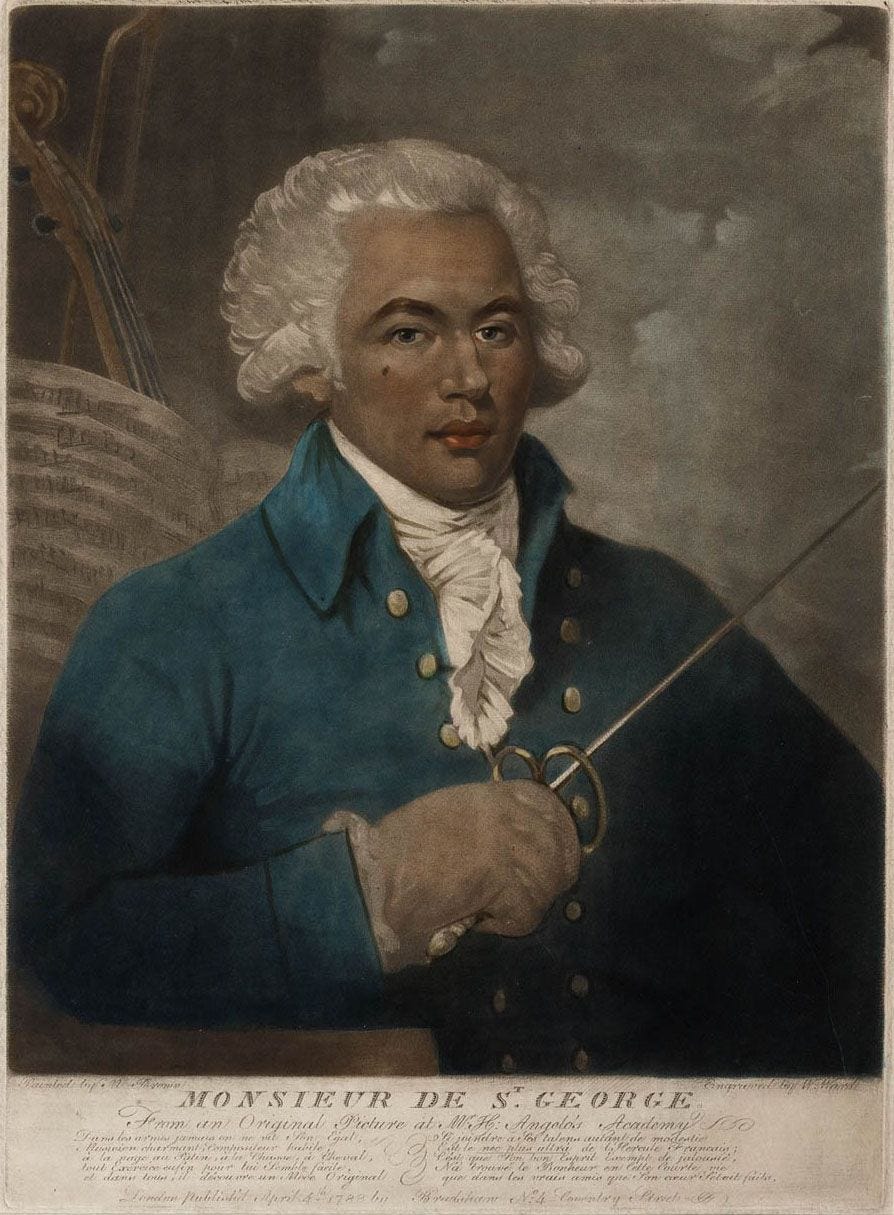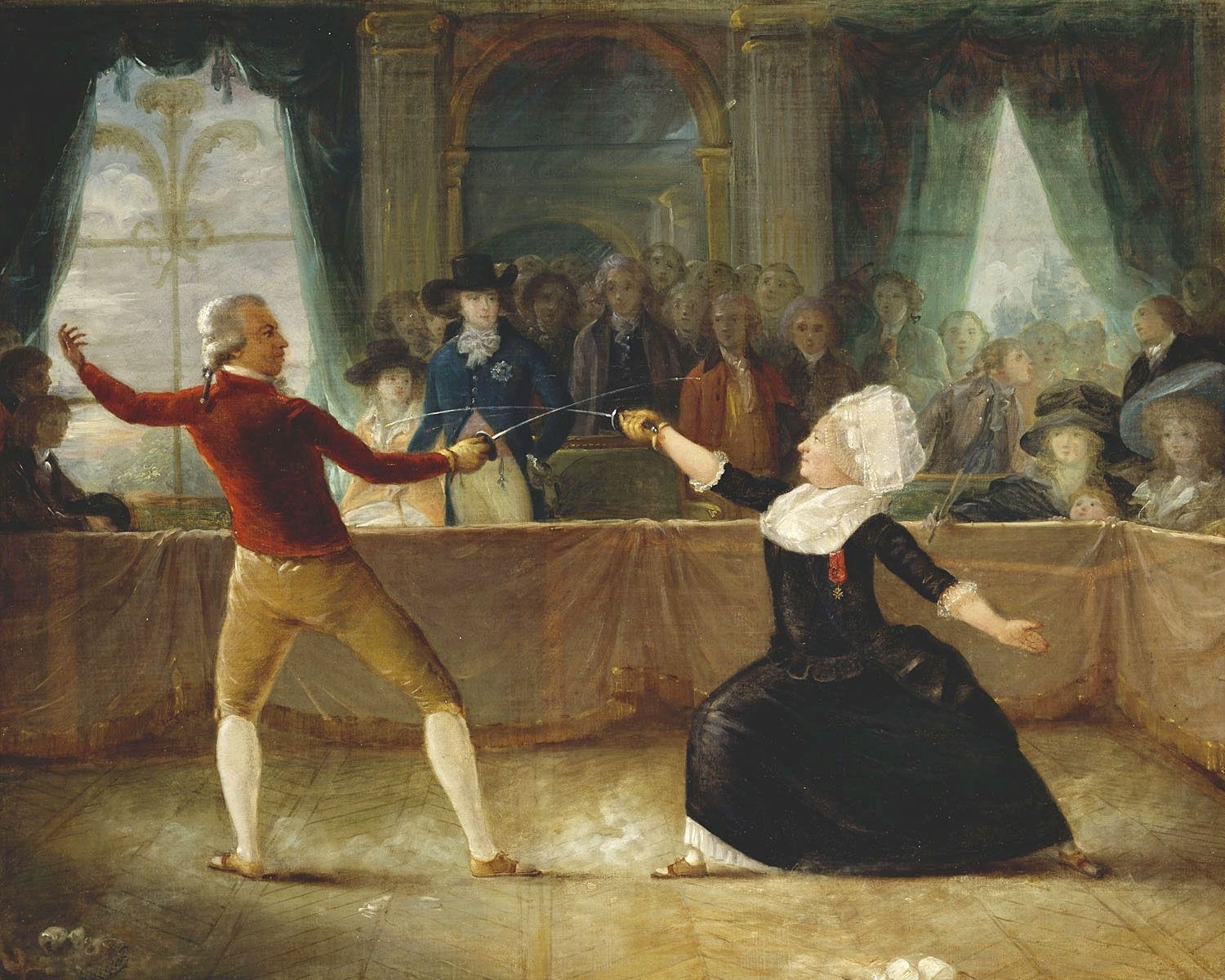
Joseph Bologne was born in 1745 on the Caribbean island and French department, Guadeloupe. His father, Georges de Bologne Saint-Georges, was a wealthy white planter and his mother was a slave and personal maid to Bologne Saint-Georges’ wife. Joseph was taken into the family, however, and raised in the household. In 1753, his father took him to Paris for his education and at the age of 13 was enrolled in the Académie royale polytechnique des armes et de ‘l’équitation (fencing and horsemanship). His talent in fencing were so remarkable that just four years later at age 17 he was considered extraordinary, famously beating the fencing master, Alexandre Picard, in Rouen. Upon graduating in 1766 he was made a Gendarme du roi (officer of the king’s bodyguard) and given the title, Chevalier. He was known henceforth as Chevalier de Saint-Georges. A gifted horseman, dancer, and overall sportsman, he cut an impressive figure through Parisian society. Here is a great documentary about this remarkable man.
However, on top of all of this, Saint-Georges was also an incredible violinist. In 1764 the Italian composer Antonio Lolli wrote two concertos for him. Here’s one of them, Lolli’s Violin Concerto in C major Op.IIa №2.
In 1766, the great French composer, François Gossec, dedicated a set of six string trios to Saint-Georges.
Parisian high society knew of Saint-Georges as a great fencer, so it came as a shock when, in 1769, he began to play in the violin section in Gossec’s orchestra, Le Concert des Amateurs. It was an absolute sensation when he appeared in 1772 as the soloist for his own violin concertos, with Gossec as conductor. In 1773 he would become this orchestra’s concertmaster and conductor. Here’s a great recording of Saint-Georges Violin Concertos, Op.2
His Opus I is a wonderful set of string quartets for the unique instrumentation of two violins, cello, and bass. Here’s a wonderful performance of the first movement of String Quartet №3.
His six Quatuors concertans, composed for the typical string quartet of two violins, viola, and cellos are also lovely listening.
Saint-Georges also composed two very good symphonies. This is one of my favorite recordings of 18th century music —
One form of music that Saint-Georges popularized is the symphonie-concertantes, a concerto for two soloists and orchestra. Here is a lovely performance of the first movement to Saint-Georges’ Symphonie Concertante in G major for two violin and orchestra.
Saint-Georges stopped writing instrumental music 1779 in favor of writing opera and would eventually write six of them. Sadly, except for an aria here and there and some overtures, none of the operas have been recorded in their entirety. Saint-Georges’ life is too interesting to summarize in this little blog. I encourage you to watch the documentary and to read further about this extraordinary man.

